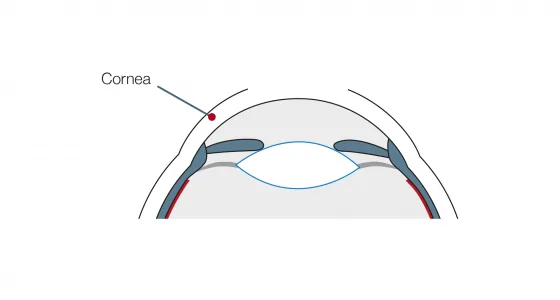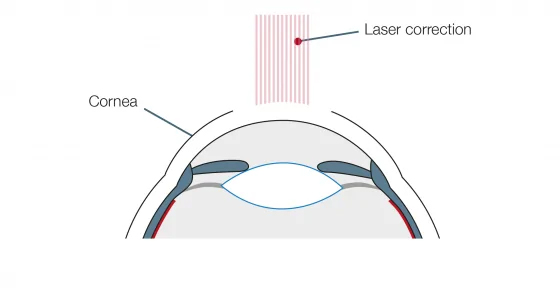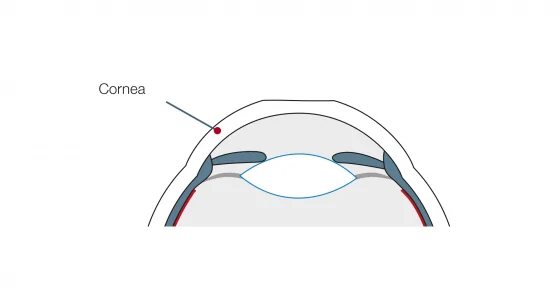PRK–The Alternative Procedure
PRK (Photo Refractive Keratektomy) and LASEK (Laser Epithelial Keratomileusis) are fallback procedures and should only be preferred to LASIK/FEMTO-LASIK in special cases.
- PRK and LASEK treatments leave a larger wound area, which can cause significant discomfort and pain.
- Additionally, a mild to severe scarring can occur, which must be treated preventively with cortisone eye drops over a long period.
- In PRK, the healing process is supported by a contact lens.
- Overall, the patient must be prepared for a long time of adjusting to the improved vision.
On the Contrary, LASIK/Femto LASIK Guarantees:
- An almost painless healing process. Because the wound in the depth of the cornea is protected by the "Flap", it creates no scars
- And the improved vision adapts very quickly.
As mentioned before, PRK or LASEK are only fall-back procedures. For this reason, EuroEyes generally only carries out this treatment with patients that have very thin corneas or particular professional reasons, and therefore can't go through with LASIK/FEMTO LASIK. Furthermore, the treatment options for LASEK or PRK are limited. As a rule, only myopia up to -6 D and astigmatism up to max. 3 D can be corrected. The correction of presbyopia is not possible.
In Summary, the Advantages of LASIK / Femto-LASIK Compared to PRK / LASEK:
- Faster visual rehabilitation
- Painfree
- Refractive stability
- No regression of the visual disorder
1. Personal, Non-binding Consultation:
- All relevant eye parameters are measured.
- We determine what the best method of treatment is for your eyes
- Examine your eyes to make sure you are a suitable candidate for the treatment

2. A Thorough Medical Preliminary Examination
- The examination usually lasts about two hours
- Intensive ophthalmic preliminary examination and measurement of your eyes
- Our specialists in ophthalmology will explain every detail about the treatment
- Before this preliminary examination you should not have worn soft contact lenses for one week and hard contact lenses for two weeks
- Please note that after the examination you will not be safe driving a vehicle–neither car, nor motorcycle or bicycle. We therefore recommend that you take a cab or public transportation
- Following the examination you will receive an after-care set for the days after your treatment. The medication and content will be explained in detail by our staff
3. On the day of your PRK/LASEK treatment
- We recommend that you wear comfortable clothing on the day of treatment.
- You can eat and drink regularly on the day of treatment, please do not smoke.
- For reasons of hygiene, it is important that you wash your face thoroughly before the treatment, completely remove make-up and do without perfume.
- Drop anesthesia is used
- Outpatient procedure, no eye bandage, sunglasses recommended
- Total duration of surgery (both eyes): approx. 25 min.
- You are not allowed to drive a vehicle after the treatment
4. After PRK/LASEK operation
- Please don't rub your eyes.
- The doctor will explain the administration of the artificial tear use, the combination of eye drops that prevents swelling and inflammation, and pain-killing drops to you in advance.
- Professional activity after 1-2 weeks
- Sports activities, as well as swimming and sauna after approx. 2 weeks.
- Controls: two days, four days, one week, two weeks, one month, two months and three months after surgery
- Driving is only permitted again with the doctor's permission.



